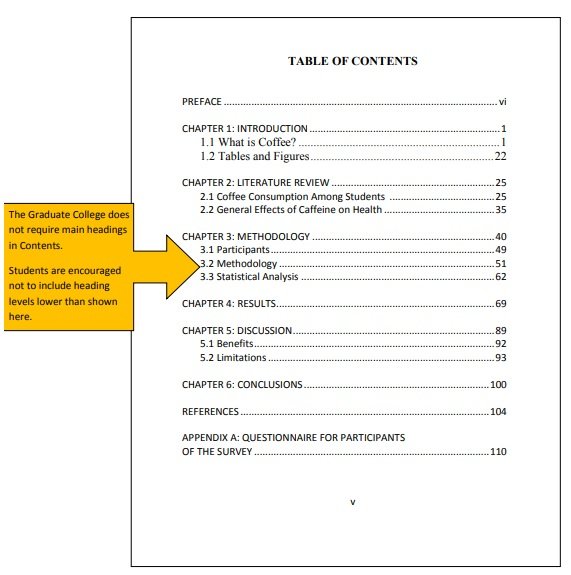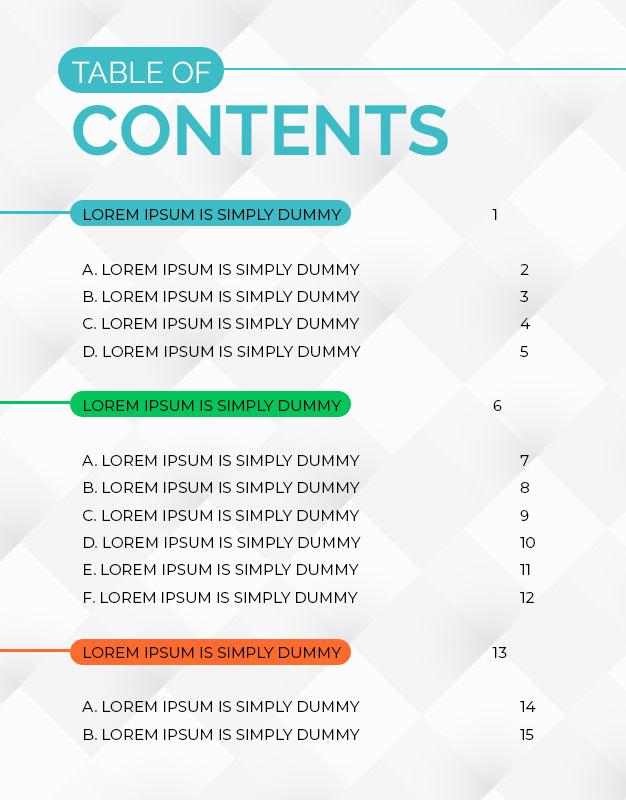
Automatically updating the table of contents To allocate the formatting for each heading throughout the rest of the document, highlight the headings in question and click the styles you wish to apply.
#SAMPLE TABLE OF CONTENTS WORD DOCUMENT UPDATE#

First, you must set the style for each heading level. There are two steps to apply heading styles in your document. When you are ready to insert the table of contents, click OK and it will be automatically generated.
#SAMPLE TABLE OF CONTENTS WORD DOCUMENT MANUAL#
Here you can select which levels of headings you would like to include in the table of contents and also make manual adjustments to each level by clicking the Modify button. Click the arrow next to the Table of Contents icon and select Custom Table of Contents.In the references section in the ribbon, locate the Table of Contents group.Place your cursor where your table of contents should go.Be sure to follow the standard format for your citation style or as per your university/department guidelines. Once you have done that, follow these steps: To automatically insert a table of contents in Microsoft Word, you must apply heading styles throughout the document. Example of heading levelsĪutomatically creating a table of contents in Word Subsections of each of these would be level two headings, and further subsections would be level three. Level three headings are optional and should be omitted if you run over two pages.Įxamples of level one headings are Introduction, Literature Review, Methodology and Bibliography. What to include in your table of contentsĪll level one and two headings should be included in the table of contents. Page numbers that indicate where in the dissertation each section can be foundĬheck with your university or other educational institution to see if there are any specific formatting requirements you must adhere to.Frequently asked questions about the table of contents.



 0 kommentar(er)
0 kommentar(er)
